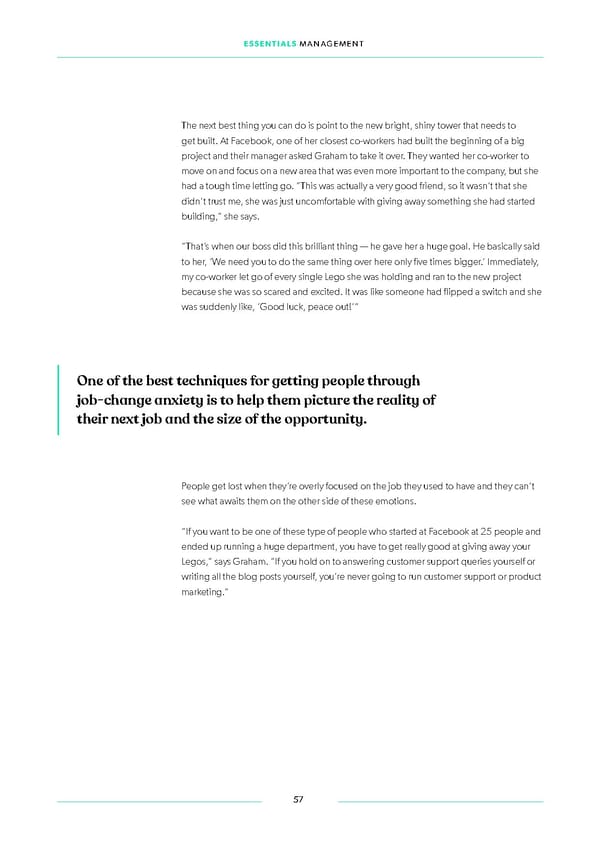ESSENTIALS MANAGEMENT The next best thing you can do is point to the new bright, shiny tower that needs to get built. At Facebook, one of her closest co-workers had built the beginning of a big project and their manager asked Graham to take it over. They wanted her co-worker to move on and focus on a new area that was even more important to the company, but she had a tough time letting go. “This was actually a very good friend, so it wasn’t that she didn’t trust me, she was just uncomfortable with giving away something she had started building,” she says. “That’s when our boss did this brilliant thing — he gave her a huge goal. He basically said to her, ‘We need you to do the same thing over here only ifve times bigger.’ Immediately, my co-worker let go of every single Lego she was holding and ran to the new project because she was so scared and excited. It was like someone had lfipped a switch and she was suddenly like, ‘Good luck, peace out!’” One of the best techniques for getting people through job-change anxiety is to help them picture the reality of their next job and the size of the opportunity. People get lost when they’re overly focused on the job they used to have and they can’t see what awaits them on the other side of these emotions. “If you want to be one of these type of people who started at Facebook at 25 people and ended up running a huge department, you have to get really good at giving away your Legos,” says Graham. “If you hold on to answering customer support queries yourself or writing all the blog posts yourself, you’re never going to run customer support or product marketing.” 57
 Essentials Management First Round Capital Page 56 Page 58
Essentials Management First Round Capital Page 56 Page 58